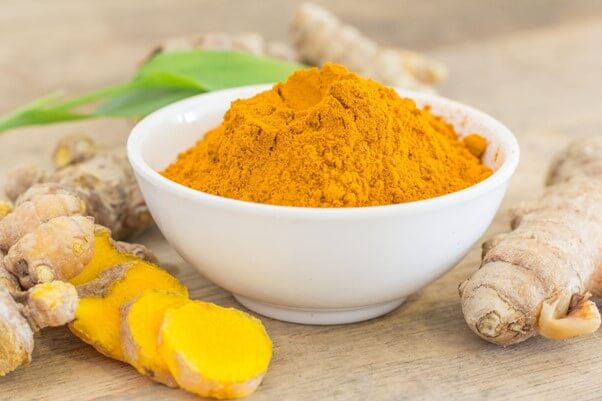The Science Behind Turmeric’s Anti-Inflammatory Powers Explained

What if a spice in your pantry could rival prescription anti-inflammatories? 🌿 Turmeric—a golden root native to Southeast Asia—has been used for millennia in Ayurvedic medicine. Today, science confirms its active compound, curcumin , is a potent inflammation fighter.
Whether you’re battling arthritis, recovering from workouts, or researching natural remedies, turmeric offers a safe, evidence-backed solution. Let’s dive into the science, benefits, and practical ways to harness its power.
1. Why Turmeric is a Superfood
Turmeric isn’t just a curry ingredient—it’s a medicinal powerhouse:
- Curcumin’s Role: The star compound makes up 2–8% of turmeric. It’s a polyphenol with antioxidant and anti-inflammatory properties.
- Ancient Wisdom: Used in Ayurveda for 4,000+ years to treat wounds, infections, and inflammation.
- Modern Research: Over 3,000 studies validate its health benefits, from pain relief to chronic disease prevention.
Key Takeaway: Turmeric bridges ancient tradition and cutting-edge science.
2. How Curcumin Fights Inflammation
Inflammation is your body’s defense mechanism, but chronic inflammation drives diseases like arthritis, diabetes, and cancer. Curcumin tackles it through:
- Blocking NF-kB: This “master switch” triggers inflammation. Curcumin inhibits it, reducing cytokines (inflammatory proteins).
- Neutralizing Free Radicals: Curcumin’s antioxidant power stops oxidative stress, a key inflammation driver.
- Boosting Glutathione: It raises levels of this master antioxidant, further combating damage.
Science Simplified: Think of curcumin as a “fire extinguisher” for inflammation at the cellular level.
3. Proven Benefits for Chronic Inflammation & Pain
Turmeric isn’t just trendy—it’s transformative:
- Arthritis Relief:
- A 2016 study found curcumin as effective as NSAIDs for rheumatoid arthritis, without side effects.
- Reduces joint swelling and stiffness in osteoarthritis.
- Post-Workout Recovery:
- Lowers muscle soreness and speeds healing after exercise.
- Gut Health:
- Eases symptoms of IBS, Crohn’s disease, and ulcerative colitis by calming gut inflammation.
Pro Tip: Pair turmeric with ginger for amplified anti-inflammatory effects.
4. Turmeric vs. NSAIDs: Why Natural Wins
| Factor | Turmeric | NSAIDs (e.g., Ibuprofen) |
|---|---|---|
| Safety | Safe for long-term use | Risks ulcers, kidney damage |
| Side Effects | Minimal (nausea in high doses) | Heartburn, dizziness, dependency |
| Bioavailability | Low (boost with black pepper/fat) | Immediate absorption |
Why It Matters: Turmeric offers sustainable relief without the risks of pharmaceuticals.
5. How to Use Turmeric for Maximum Benefits
Getting the most from turmeric requires strategy:
- Dosage:
- 500–1,000 mg curcumin daily for therapeutic effects (consult a doctor).
- Standardized supplements ensure potency.
- Golden Paste Recipe:
- Mix ½ tsp turmeric, ½ tsp black pepper, 1 tsp coconut oil, and warm water.
- Drizzle on soups, rice, or eggs.
- Supplements vs. Whole Spice:
- Supplements: Higher curcumin concentration.
- Fresh/Cooked Turmeric: Rich in other beneficial compounds (e.g., turmerone).
Key Hack: Always combine with black pepper (piperine boosts absorption by 2,000%).
6. Emerging Research: Beyond Inflammation
Curcumin’s potential is vast:
- Brain Health: May slow Alzheimer’s progression by clearing amyloid plaques.
- Cancer Prevention: Early studies show it inhibits tumor growth and metastasis.
- Heart Health: Improves blood vessel function and lowers “bad” LDL cholesterol.
Note: While promising, more human trials are needed—view these as “bonus perks,” not cures.
7. Myths About Turmeric, Debunked
Let’s set the record straight:
- Myth: “Turmeric cures everything.”
Fact: It’s a supportive tool, not a magic bullet. Pair it with diet, exercise, and medical care. - Myth: “All turmeric products are equal.”
Fact: Quality matters! Choose organic, Ceylon turmeric and avoid additives.
8. Turmeric Recipes for Daily Wellness
Incorporate turmeric into your routine with these easy ideas:
- Golden Milk Latte:
Simmer 1 cup milk (dairy or plant-based) with ½ tsp turmeric, ¼ tsp cinnamon, and a dash of black pepper. Sweeten with honey. - Anti-Inflammatory Smoothie:
Blend 1 frozen banana, 1 cup spinach, ½ tsp turmeric, 1 tsp ginger, and 1 tbsp chia seeds. - Roasted Veggies:
Toss cauliflower or sweet potatoes with olive oil, turmeric, paprika, and salt. Roast at 400°F (200°C) for 25 minutes.
Conclusion
Turmeric’s anti-inflammatory powers are no longer a secret—science confirms what ancient healers knew. From easing arthritis to supporting brain health, this golden spice deserves a place in your wellness toolkit. Start small, experiment with recipes, and consult a healthcare provider for personalized advice.
Your Turn: How do you use turmeric? Share your favorite tips below! 👇
FAQ: Turmeric Edition
How long until I see results?
Consistency matters! Benefits often appear after 4–8 weeks of daily use.
Is turmeric safe daily?
Yes, in culinary doses. For supplements, consult a doctor.
Can I take it with medications?
Turmeric may interact with blood thinners—always check with a physician.
Ready to explore the power of turmeric root?
Visit Vagaa.lk for premium turmeric root and other natural remedies.

